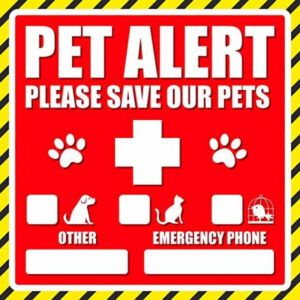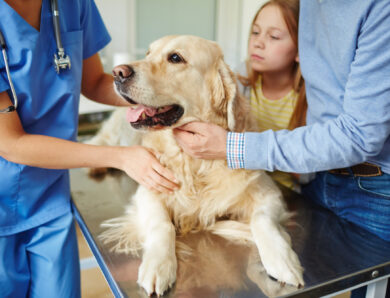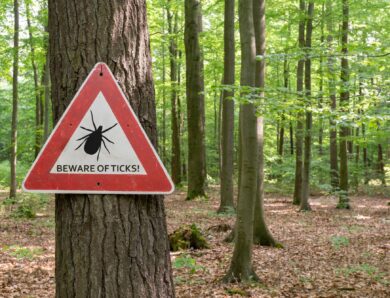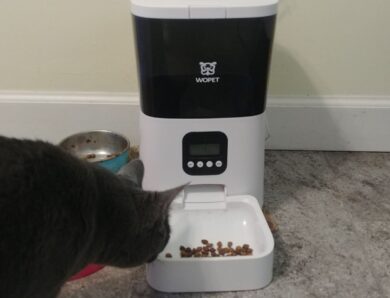It’s not something many people ever give much thought to, but planning for how to protect your pets from house fires should be an essential part of being a pet parent. According to the American Veterinary Medical Association, about 40,000 pets die in residential fires every year.
The best way to ensure you’re never one of them is to follow some key pet fire safety rules and plan for the worst-case scenario so you know what to do in case of fire and can do it quickly.
Prevention
The National Fire Protection Association estimates that between 2014 and 2018, animals, including pets, caused an average of 790 home structure fires per year, resulting in $17 million in direct property damage on annual basis.
Just because you have a pet doesn’t mean a fire is inevitable. An ounce of prevention can save a lot of heartache. And, it doesn’t have to take a lot of effort.
Here are a few fire prevention tips to ensure your pets don’t cause a housefire.
Open Flames
The easiest rule to follow: don’t leave your pets unattended near open flames. That includes lit candles, stovetops, and fireplaces.
Dogs and cats are curious and will nose around things they’re unfamiliar with. The last thing you need is your pet pawing a candle, getting burned, and striking out knocking the candle down. Or knocking over a pan with burning oil in it.
And anyone with a cat knows the kind of damage their kitty can cause with a careless swoosh of his tail. Whenever possible, consider using electric candles.
This is particularly important during the winter holidays, when people are focused more on the ongoing festivities than whether their cat is getting too close to a menorah with real candles.
Stove Knobs
Accidents involving the stove are the number one cause of pet-involved fires. Train your pets not to jump on the stove. An accidental nudge of a knob can cause all kinds of problems, from an unattended open flame to leaking gas that ignites later on.
If you’ve got a pet with full access to your house when you’re not around, consider removing stove knobs or covering them with special covers when you’re not at home.
Wires
Half-chewed wires and power cords pose an immediate fire threat and need to be replaced or fixed as soon as they’re spotted. To prevent your furry chewer from causing a problem in the first place, secure wires and cords inside specially-designed protective covers.
Smoke Detectors
Having smoke detectors is a fire safety tip everyone should be adhering to, pets or not. For those with pets taking it one step further and opting for monitored smoke detectors offers extra peace of mind.
With a monitored smoke detector, a central office knows instantly if the alarm has been triggered and where the detector is located in the house. This information is immediately passed on to your local fire station and firefighters are dispatched. The office also has information about your pets so they can pass that along to the firefighters as well.
Preparation
Despite the best prevention methods, fires can still happen and you want to be as prepared as possible just in case.
The best way to protect your pets from a house fire is to take them with you when you evacuate, but that’s not always easy. Many animals, cats especially, will hide when scared.
If you have cats, get to know their go-to hiding spots. (You also want to know all their favorite napping spots, particularly if they’re not easily spotted.) Should there be a fire and you can’t find your cats immediately, you’ll know where to look.
Plan & Practice
Families with and without pets should have fire emergency plans. Go over the plans with your kids and practice every once in a while.
Include your pets in the plans! Who is in charge of grabbing which pet? If you have pets that need to be crated, practice getting them in their crate or carrier and getting outside as quickly as possible. Reward your pets afterwards, so the experience can be as positive as possible.
If you have pets that bolt the minute they see the crate or carrier, figure out how to corral them as quickly as possible into a spot they can’t escape from. Keep in mind that area might not be accessible during the fire. Is there a backup spot?
Also, where will you be going if your house is damaged in a fire? If you’re planning on a shelter, remember not all shelters accept pets. You need to have a plan for what you’ll do with your pets if you can’t get back into your home.
Options could include local boarding kennels, a local animal shelter that offers emergency or foster care for pets that can’t be with their families, local pet-friendly hotels, or family/friends who can pet sit in their own homes.
Microchip
Dogs should always be wearing collars with ID tags. This is important on a day-to-day basis as you never know when a dog will get away during a walk, but it’s also important in case of fire. Should your dog escape the fire without you, anyone who finds him will know who to contact.
Outdoor cats should also always be wearing a collar with ID tags. But few cat parents put collars and ID tags on their indoor cats.
The easiest alternative to ID tags is to get your pet microchipped. All shelters scan animals for microchips. If your pet winds up at a shelter, you can be sure she’ll get back to you.
Pet Alert Window Cling
Free pet fire safety stickers or window clings are available from several resources, including the ASPCA and, sometimes, your local fire department. You can also buy them at almost any pet store. These stickers alert firefighters that there are pets in the house or apartment that need to be rescued.
Most pet fire stickers have a space to write how many dogs and are in the house, so the firefighters know just how many animals to keep an eye out for. Some stickers also have a spot for animals other than dogs and cats. If it doesn’t, you can use a Sharpie to write in extra info.
While you’re at it, dog parents should always keep a leash near the door so a firefighter can grab it when searching for your dog.
If you’re able to evacuate with your pets and have the time, try to remember to write “Evacuated” on the sticker(s) so firefighters know not to waste precious time.
Putting a pet alert window cling or sticker on a window (easily visible!) and all doors is an easy step you can take to help to help improve your pets’ chances of surviving a fire.
Emergency Evacuation Kit
An emergency kit should be part of every fire plan and should have everything you might need should you be unable to get back in your home. For families with pets, this should include everything they need.
This can include leashes, food, medication, important telephone numbers, and insurance policy info.
Emergency kits should be clearly marked and kept as close to your designated exit as possible. (If you have multiple potential exits, consider making more than one emergency kit.) The National Fire Protection Association has a great checklist for what to include in a pet evacuation kit.
Our favorite tip from their checklist is to put copies of all the important paperwork (this can include paperwork for you and your family as well), plus photos of your pets onto a flash drive and put that into the kit. Give a second flash drive with all the same information to a close family member or friend. This way if you don’t have time to grab your evacuation kit, you’ll still have access to the information you need.
During a Fire
If you can, take your pets with you when you evacuate. If you’ve prepared ahead of time, this shouldn’t take you more than a minute or two. Sadly, you won’t always have a minute. Do not risk your life or attempt to enter a room that’s engulfed in flames to get to your pet.
If you need to evacuate with any pets, try to leave a door or first-floor window open. Then call for your pet from outside. If at all possible, choose the door your pets are most familiar with as that’s the first place they’ll go to try and get outside.
Once you’ve got our pets outside, head to your pre-designated meeting point. If you’ve got your evacuation kit with you, give your pets some water to cool them down. As soon as you’re able, get them to a vet to check for smoke inhalation as well.
Keep your dog safe at the pool with these dog pool safety tips.







